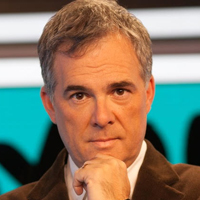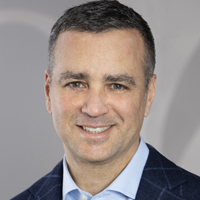
Sharing Strategies For Launching OTT Services

 NEW YORK — Differentiation, the lack of standardized viewer metrics and personalization are among the challenges that news organizations face in rolling out OTT streaming services, according to executives from eight leading news organizations who spoke at TVNewsCheck’s OTT News Summit.
NEW YORK — Differentiation, the lack of standardized viewer metrics and personalization are among the challenges that news organizations face in rolling out OTT streaming services, according to executives from eight leading news organizations who spoke at TVNewsCheck’s OTT News Summit.
Being able to differentiate one’s OTT service from the many competing options is crucial, as is coming up with the right content strategy to meet viewers’ demands, the executives said during separate panel sessions addressing local and national OTT services.
Sinclair is differentiating its OTT presence, in part, via STIRR, the 32-channel live and on-demand service it launched early this year that combines local and national programming, and through the news app NewsON that aggregates the local newscasts and clips of 200 TV stations, according to Scott Ehrlich, Sinclair VP of emerging platform content. (NewsON just expanded onto Amazon Fire devices Monday, June 10.)

Sinclair’s Scott Ehrlich
OTT services differentiate themselves from linear news by being “always there,” Ehrlich said. “People expect the information when the information’s available. They don’t expect to wait until 6, 6:30, 10, whatever the case may be.
“So, the first thing that your newsroom has to learn is this is an audience that’s always hungry to be fed the latest [news] and they’re not particularly happy about waiting until it’s convenient for you to tell them the story.”
Local newsrooms have to figure out how to go beyond the on-air services in a way that will “keep people coming back,” according to Adam Wiener, EVP and general manager of CBS Local Digital Media, which has rolled out local OTT news services in New York and Los Angeles with Boston and the rest of the CBS markets to follow.
Wiener pointed out that the audience for local OTT “really isn’t mature yet.”

CBS Local Digital Media’s Adam Wiener
He chalked that up to “just the generational shifting that happens in viewing. Millennials are probably not going to watch local news, “regardless of what you’re providing until they really care about it,” he said. People only start caring when they reach a point when they have kids and a home with a mortgage and local school board decisions suddenly start mattering to them, he said.
It used to be that the first two calls you made when you graduated college and set up a household were to cable and landline telephone companies, he said. Neither of those calls happen much anymore because millennials don’t want cable TV and already have a phone — their smartphones, Wiener said.
OTT has solved one problem for stations, Wiener said. They no longer have to worry about interrupting entertainment programs for breaking news. Streaming “opened the door” for stations to serve the news junkies without disrupting the on-air schedule.

Cox’s Ian Stinson
At Cox Media Group, its local OTT services have allowed the station group to expand the scope of its news, said Ian Stinson, executive director of digital audience and product.
Cox has a national desk that produces content and is also acquiring content from third parties and “layering that in as well, he said. As we do that, “we learn a little bit more,” Stinson said.
For the most part, the news organizations don’t create new versions of broadcast stories for their OTT platforms. “We try to stay away from that as much as possible,” said Colby Smith, ABC News SVP of content and partnerships, who runs the ABC News Live OTT service.

ABC’s Colby Smith
The closest ABC News Live will come will be later this summer when it plans to create OTT segments from ABC News’ popular podcasts.
The story is the same at CBSN, CBS News’s OTT service. CBSN will “rework” segments a bit, but for the most part it’s the same content being used for broadcast, said Nancy Lane, digital VP and senior executive producer, programming and development. The strategy “works for us.”
Personalizing content for viewers, meanwhile, is also important, but comes with “deep challenges” because it places new demands on workflow, Stinson said.

CBS’s Nancy Lane
Personalization can happen “potentially on the device interface” that viewers choose, “but not necessarily in the live stream,” said CBS’s Wiener. “I can personalize what I present to you when you arrive, before you start watching, and that’s critical.”
Personalization is hard to manage, Sinclair’s Ehrlich said. Studies show that “people get a little bit afraid of personalizing news because they have a fear that they’re going to miss a story that they should see.”
On the other hand, viewers don’t want to be bothered with other kinds of news, such as that from other cities, he said. It’s a “delicate balance.”
“If there’s too much personalization and not enough of a body of content behind it, that can also be not a very satisfying experience,” Ehrlich said. However, he added, “the more personal the experience … the better off we’re all going to be.”
CBS’s Lane said the lack a common means of gauging viewership and comparing the reach of services is one of the “biggest challenges of OTT right now. We all have our own internal measurements.”
The national CBSN OTT service set a record in February with 400 million total streams, she said. But “it’s a challenge for the entire industry, especially as you go forth trying to do sales against it,” she said. “We have to find a way, but it hasn’t been developed yet.”

Fox News’ John Fiedler
Agreeing, John Fiedler, EVP of digital products and technology at Fox News and Fox Business, said some organizations measure it by time spent viewing content, others instead look at the number of unique viewers, while, on social media, some look at page views.
“You can slice and dice the numbers any number of ways,” he said. As a result, most organizations are focused on their internal numbers for now, he said, adding Fox tends to place the most importance on engagement, which it believes represents the number of people viewing its content.
CNN is trying to “think of ways to sell it as TV versus just thinking about it as digital,” said Rajin Persaud, CNN digital products VP.
The record for the CNN OTT service was 2.4 million concurrent streams during the 2016 elections, he said. “Our sales organization is looking at ways [to] package that … and take it to the marketplace differently because the industry is not moving in a way that gives us a common unit of measurement for these digital platforms.”

Scripps’ Tony Brown
Tony Brown, chief of staff for the E.W. Scripps Co.-owned Newsy news service, predicted that advertisers will “continue to drive” OTT measurement.
Newsy is available as a linear service on cable, but it started as an OTT service four years ago. “So, we are looking at how we actually take what we’ve learned on OTT and apply it back to more traditional forms of business.”
In addition to its ad-supported Fox News OTT service, Fox has just launched Fox Nation, a direct-to-consumer subscription offering.
With Fox Nation, the company wanted to avoid disrupting what its linear news channel does, so Fox Nation substitutes original programming for breaking news, Fiedler said.
Fox is happy with the growth so far of Fox Nation, he said. “Building any sort of subscription-based, direct-to-consumer-based business is challenging.” More marketing is necessary to convince consumers of its value and why they “should subscribe to it when they’re already paying for other TV-related services.”
CBSN goes beyond remixing broadcast news, said Lane. “You get something fresh [that’s] able to respond to the breaking news right away, and then we add to that. We’ve been on a roll in creating new segments and new content virtually every year and we just keep seeing it grow.
“We hear directly from our users. It’s one of the real pluses of being on a digital stream. We can hear directly from them in real time. And we’ve been able to iterate.”

CNN’s Rajin Persaud
Although platforms permit viewers to pick the news they want to see on demand, “live is what we thrive on,” said CNN’s Persaud. “What we see today is that the live consumption on our OTT platforms far outstrips consumption even on TV in terms of time spent.”
Smith said its ABC News Live OTT service was built “from scratch.” With it, “we don’t want to replicate television; in fact, we deliberately want to make it look and feel differently,” he said.
That’s because streaming audiences “grew up digital natives — they’re not relying on pay TV,” so their expectations are “completely different, Smith said. “We can get creative with just the volume of raw live streams. We listen to the audience to sort of confirm they’re comfortable with that.
“We believe that there’s always something interesting happening in the world that’s getting streamed live,” he said. “The hard part is finding it and curating it for the audience and then putting together a sort of cohesive brand strategy around it.”
You can find TVNewsCheck’s exclusive coverage of the summit here and listen to audio files of all the sessions here.
































Comments (0)